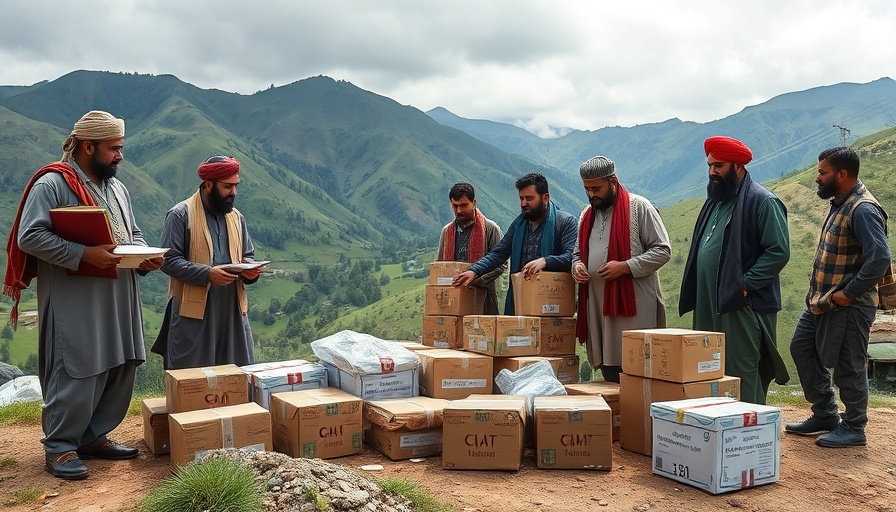
A Tragic Earthquake Strikes Eastern Afghanistan: What Happened?
In the late hours of Sunday, August 31, a powerful earthquake with a magnitude of 6.0 struck eastern Afghanistan, devastating towns in the Kunar province near Jalalabad. This tragic event resulted in the loss of at least 800 lives, with over 2,500 individuals reported injured, according to the Taliban government. The quake struck at 11:47 PM local time, merely 27 kilometers (17 miles) from Jalalabad, at a shallow depth of just 8 kilometers (5 miles), significantly amplifying its destructive potential.
The Immediate Aftermath and Rescue Efforts
In the wake of the earthquake, harrowing scenes unfolded as residents desperately searched for loved ones buried beneath the rubble of collapsed buildings. Videos showed rescuers carrying injured individuals on stretchers and airlifting them to safety. The chief spokesman for the Taliban government, Zabihullah Mujahid, confirmed during a press conference that most casualties were registered in Kunar, one of the provinces hardest hit by the tremor.
Destructive forces of nature like this earthquake expose vulnerabilities inherent to the local infrastructure. Buildings in Afghanistan are predominantly low-rise, constructed from materials like concrete, mud bricks, and wood. Many homes, particularly in rural areas, exhibit inadequate construction quality, which exacerbates the impact of natural disasters. The villager from Nurgal district, one of the worst affected areas, lamented that almost the entire village has been reduced to rubble, highlighting the overwhelming need for rescue and humanitarian assistance.
Historical Context: Earthquakes in Afghanistan
Afghanistan has a tragic history of experiencing seismic activity due to its geographic location at the convergence of several tectonic plates. Past earthquakes have claimed thousands of lives and caused extensive destruction, raising awareness about the need for improved building standards and disaster preparedness. Each tremor uncovers the lessons of history, emphasizing the importance of community resilience and international support in the face of such calamities.
The Community Response: Resilience in the Face of Disaster
Despite the devastation, the spirit of the Afghan people shines through their response to this disaster. Local communities have rallied together, with neighbors helping to dig through debris in the hopes of finding survivors. The call for international aid is also growing louder as voices rise from the wreckage, urging nations to extend their hands in solidarity. Many Afghans are sharing their stories online, shedding light on their urgent need for aid, including food, medicine, and temporary shelter.
International Implications and Humanitarian Needs
This earthquake reopens discussions on the importance of global solidarity during humanitarian crises. As international media covers this tragedy, the global community is reminded of its duty to respond swiftly. Humanitarian organizations are already mobilizing to assess the situation, providing medical aid, food, and shelter to the most affected individuals. Reports indicate the need for ongoing provision of resources, as access to areas impacted by the quake remains challenging due to aftershocks and the delicate situation prevailing under the Taliban governance.
Future Predictions: Preparedness and Resilience Building
Moving forward, the need for disaster preparedness becomes ever more critical. Experts suggest that with the history of natural disasters in mind, governments and NGOs must work collaboratively on upgrading building standards across the region. Disaster preparedness training and awareness building in vulnerable communities can significantly enhance the resilience of the population, reducing casualties in future incidents.
In a region such as Afghanistan where natural disasters can strike without warning, comprehensive plans and proactive measures can help mitigate risks and improve community safety. Investment in infrastructure resilience is paramount—not only to protect lives but also to foster future stability in the country.
Take Action: How You Can Help
The earthquake in eastern Afghanistan has left an indelible mark on the lives of thousands. As local residents begin the long journey of recovery, the global community is called to action. Organizations such as the International Red Cross and various NGOs are mobilizing to provide essential support, including food, clothing, and medical supplies. Click [here] to learn how you can contribute and support the Afghan people during this critical time.
 Add Row
Add Row  Add
Add 




Write A Comment